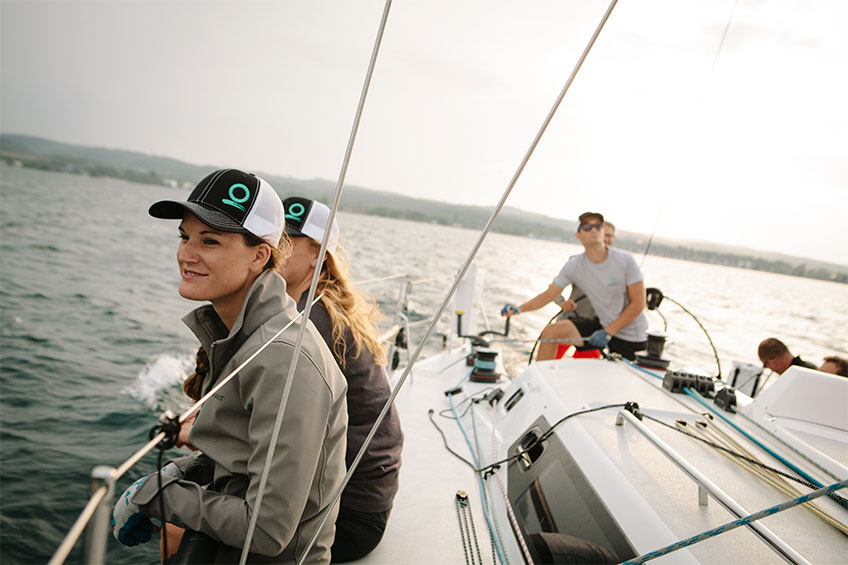Refreshed October 2023
Balance on a boat is more than just keeping your feet onboard and staying out of the water. Finding boat balance gives you more control, which leads to smoother, safer cruises and faster races. Understanding The Center of Lateral Resistance (“CLR”), the Center of Effort (“CE”) and how they interact with each other is key to maintaining control of your boat.

The journey for many sailors begins on a dinghy. Here, the importance of sail balance becomes obvious quickly. How you balance the power in your sails directly affects your ability to stay dry: if you let the boat get away from you, you capsize. Factors such as weight distribution, sail trim and the unique characteristics of each boat come into play. If you want to fully understand boat balance, hop on a dinghy and try to sail around without rudders. It becomes very clear that it is weight placement and the sails - when trimmed properly - that steer the boat!
For racers, that realization has enormous benefits. Using your sails instead of relying solely on your rudder eliminates a certain amount of drag that slows the boat down, but the advantages of a balanced boat don’t just apply to racers trying to squeeze out every last tenth of a knot of boat speed. Having your sail and hull forces act in concert makes steering easier, lessens the strain on your gear and equipment, reduces heeling and makes for faster, safer and smoother passages, no matter which kind of sailing you do.
CENTER OF LATERAL RESISTANCE AND CENTER OF EFFORT
Knowing the right actions to take to achieve balance starts by understanding what’s happening above the deck and below the waterline.
Boat designers consider many factors, such as mast height and aspect ratio, when designing the underwater shape of a boat. The goal is to create a shape that allows the power of the sails to be transformed into forward motion. Inherent in that shape are the keel and rudder designs, which provide the necessary resistance to the sideways push on the sails to keep the boat moving forward. The averaging out of these anti-sideways forces creates a theoretical bullseye known as the Center of Lateral Resistance (CLR). The CLR is a static, or fixed, location that usually ends up in the aft section of the keel.
Above deck, a similar theoretical bullseye marks the average of all the pressure exerted on the sails by the wind – that bullseye is known as the Center of Effort (CE). Unlike the CLR, the CE moves: different sail sizes exert different forces in different places, moving the bullseye around. Changing conditions also affect the CE.
When the CE is positioned directly over the CLR, the boat will sail in a straight line without having to touch the wheel or tiller. This works because the CLR acts like a pivot point. If the CE is in front of the CLR, the bow will move away from the wind (creating lee helm). Conversely, moving the CE aft of the CLR will point the bow into the wind (resulting in weather helm).
Knowing this information and putting it into practice are two entirely different things. The exact location of the CLR and CE aren’t marked physically on your boat, but you can test this principle yourself by trimming your sails independently of each other. If you pull the main in all the way while luffing the jib, the boat should climb to windward until it stalls out in irons. Dumping the main and trimming the genoa will have the opposite effect. Weight input will also steer the boat; leeward side weight will turn the bow up into irons, while windward side weight will turn the bow down. When you can sail in a straight line without using your rudder, balance has been achieved.
If you can’t get your boat to balance, chat with your local Quantum Sail Consultant about sail trim and weight placement on your boat. They may have some pointers that will make all the difference. Each boat is different, and it will take some experimentation to find out how well your boat is balanced, but no matter what kind of boat you’re on, the same principle applies. So, the next time you have a cockpit full of friends hanging out on the low side and have a hard time steering even when the sails are trimmed, ask them to move to the high side! Their windward side weight will help balance the boat and make the sail more pleasant for everyone.